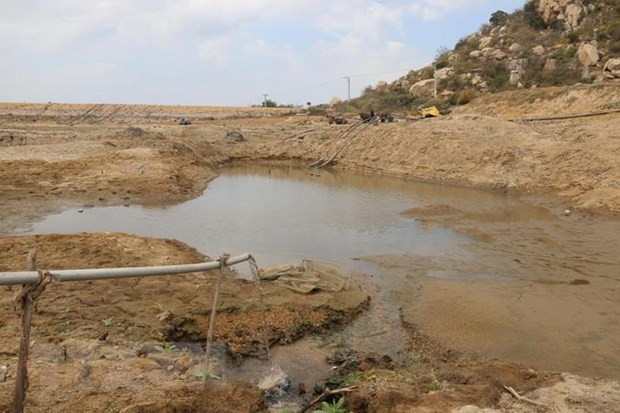 Water levels in some reservoirs in the Central Highlands are currently much lower than in previous years (Photo: VNA)
Water levels in some reservoirs in the Central Highlands are currently much lower than in previous years (Photo: VNA)Hanoi (VNA) – Although the dry season has yet toreach its peak, many reservoirs in the Central Highlands have recorded seriouslyreceded water levels, leading to water scarcity for agriculture.
According to the Central Highlandshydro-meteorological station, the rainfall in this region in 2018 wasequivalent to only about 60 – 70 percent of the annual average.
Water levels in some local reservoirs arecurrently much lower than in previous years. Notably, the level is almost 22metres lower than the annual average in the Ka Nak hydro-power reservoir in GiaLai province, meaning less than 10 percent of this lake’s water storagecapacity is full.
Meanwhile, the long dry season is still to comeand the rainy season this year is forecast to arrive late. Water scarcity inthe east of Gia Lai and Dak Lak provinces is likely to be very serious, thestation said.
Head of Dak Lak’s irrigation division NguyenThanh Long said there are 246 irrigation reservoirs and dams in his province.So far, water levels in 53 reservoirs are at less than 50 percent of theirstorage capacity, and some lakes have begun to dry up.
In Dak Nong province, water scarcity is alsosevere. Dak Ken irrigation reservoir in Dak Lao commune, Dak Mil district, thatserves about 1,000 ha of coffee trees has also dried out. Since the beginningof February, the irrigation works operating company of Dak Mil has had to pumpwater from Tay Dak Mil Lake into Dak Ken reservoir.
In Krong No district of Dak Nong, drought hasalso threatened hundreds of ha of wet rice. The Dak Ren paddy in Nam N’dircommune and the Buon Choah paddy in Buon Choah commune, rice production hubs ofKrong No, have also seen chapped soil and poor rice growth.
General Director of the Directorate of WaterResources Nguyen Van Tinh said the 2018-2019 dry season will be a serious problemin the Central Highlands, noting only 20 percent of the local plant area isgrown in areas accessible to water from irrigation reservoirs, the remaining 80percent is highly vulnerable due to their dependence on natural water sources.
Predicting the possibility of harsh drought, theMinistry of Agriculture and Rural Development last October requested localitiesto step up irrigation measures to cope with water scarcity and saltwaterintrusion in the 2018-2019 dry season.-VNA





























